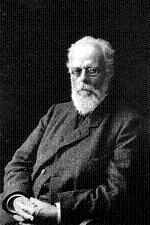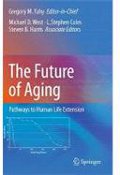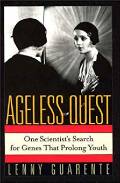August Weismann Proposes a Difference Between Germ Line and Somatic Cells
 Who:August Weismann
Who:August WeismannWhen:January 01, 1892
Methods: By drawing upon current research and contrasting it to the current dogma under Darwin's theory of pangenises.
Institution: University of Freiburg-in-Baden
Where: Freiburg im Breisgau, Baden-W�rttemberg, Germany
In his 1893 book The Germ Plasm, August Weismann introduced the concept of a germ line and somatic line in the development of organisms. The concept was drawn, in part, by contrasting Darwin's theory of Pangenesis, the central dogma of the time.
Darwin's theory suggested that the body's cells emit hundreds of gemmules which aggregate in the reproductive organs prior to fertilization. This implies that the somatic line(cells of the body) contribute to the germ line(cells of reproduction).
Weismann's brilliance was to suggest the opposite, that the somatic line originated from the germ line, and the germ line itself remained forever separate and apart from the somatic cells of the body.
Let us assume that the germ contains millions of the primary constituents ('Anlagen') of all the most minute portions of the body; moreover, that these constituents are always present at the right place and in the right combination during the process of development; and further, that they are capable of giving rise in their turn to the parts or organs to which they severally correspond. Such a theory explains everything, or nothing -- the premises along can be attacked. No new problems can arise from it till it has been placed upon a sound basis; the premises must be shown to be correct, and it must be proved that the germ is actually composed of primary constituents, which by some means or other become combined into groups and are capable of giving rise to the various parts and organs in question. Then, and then only, would the theory serve as an incentive to further investigations into the phenomena of heredity of all kinds, and experiments might be made which would support or contradict it...What first struck me when I began seriously to consider the problem of heredity, some ten years ago, was the necessity for assuming the existence of a special organized and living hereditary substance, which in all multicellular organisms, unlike the substance composing the perishable body of the individual, is transmitted from generation to generation. This is the theory of the continuity of the germ plasm. My conclusions led me to doubt the usually accepted view of the transmission of variations acquired by the body (soma); and further research, combined with experiments, tended more and more to strengthen my conviction that in point of fact no such transmission occurs. Meanwhile, the investigations of several distinguished biologists - in which I myself have had some share -- on the process and conjugations, brought about a complete revolution in our previous ideas as to the meaning of this process, and further led me to see that the germ-plasm is composed of vital units, each of equal value, but differing in character, containing all the primary constituents of an individual.
The key concepts in Weismann's work was not only to place the germ cells in a commanding role of development of the somatic body, but also to set the germ cells apart from the body. The resultant conclusion from this separation is that while somatic cells are susceptible to aging, the germ line cells are passed from generation to generations apparently invulnerable to deterioration.
References
- August Weismann. The Germ Plasm: A theory of heredity. Charles Scribners Sons, 1892.




